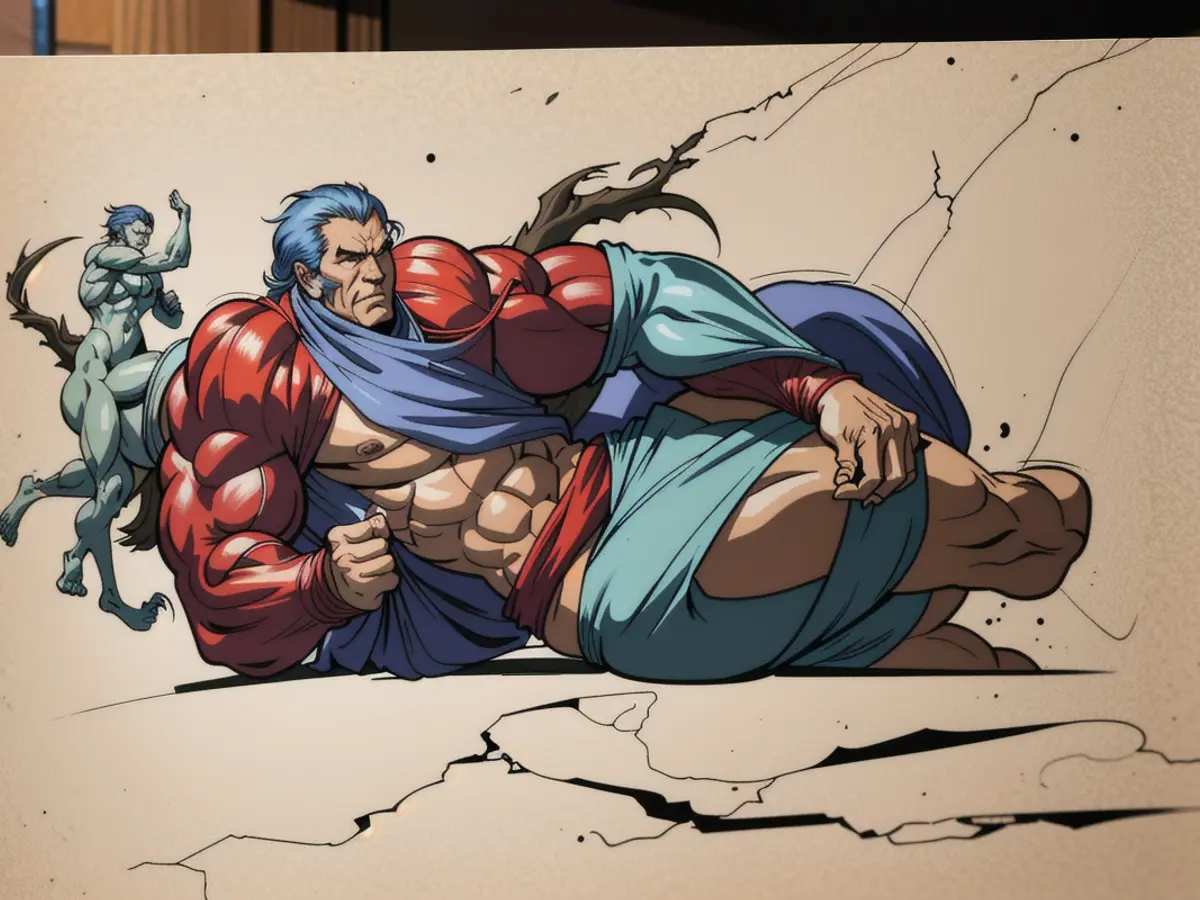- Unveiling of Dürer's Peasant War Memorial in Mühlhausen Revealed
Unveiled in the heart of Thuringia, a seven-meter-tall bronze column commemorates the German Peasants' War, designed by none other than Renaissance master Albrecht Dürer. This monument stands grandly on the square in front of the Kornmarkt church, home to the German Peasants' War Museum. The war ended five centuries ago.
Residents of Mühlhausen spearheaded the monument project, with Mayor Johannes Bruns (SPD) expressing his admiration: "Sure, it's bound to provoke debate, but this Dürer column is, above all, a timeless tribute to freedom—the freedom the peasants fought for and the foundation of our very existence that we must protect."
Originally appearing in a math textbook three years before Dürer's death, the renowned drawing depicts a sagging peasant seated upon a tower of vessels, harvest offerings, and farm tools. The peasant's head leans on his arm, and a sword penetrates his back. "In Dürer's time, such a monument would have been unheard of," the city shared. The sculpture's interpretation and art historical evaluation remain controversial, with some viewing it as a "victory monument" or a "satirical portrayal" of the peasants' defeat, while others see the peasant as a Christ figure symbolizing betrayal.
Over 210 donors from Germany contributed to the project's 250,000 euro cost, with Mühlhausen city providing 100,000 and state lottery funds adding an additional 25,000. Thuringian artist Timm Kregel brought Dürer's design to life.
Historical Uprisings
The German Peasants' War, a series of rebellions against the nobility and religious persecution, took place in 1524 and 1525. With the Reformation as a catalyst, peasants demanded better living conditions and more freedom. They also plundered and destroyed castles and monasteries. Their uprisings were swiftly suppressed.
Mühlhausen saw key events during the war, such as the actions of reformer and peasant leader Thomas Müntzer, who was eventually executed there following the Battle of Frankenhausen.
Related Topics:- Albrecht Dürer- Rebellion- Power structures- Artistic expression- Monuments and memorials- Freedom- Mühlhausen- German Peasants' War- Donations- Mayor Johannes Bruns (SPD)
(Sources: City of Mühlhausen, German Peasants' War Museum)
Of note, while Albrecht Dürer did not create any monuments directly related to the German Peasants' War during his lifetime, he was a significant figure in the artistic world of the era. His design was interpreted and transformed into the bronze monument we see today. The interpretation and historical significance of the sculpture remain a subject of debate and scholarly inquiry. (Additional Insights: Search results did not yield clear correlations between Dürer's artistic style and specific monuments in Mühlhausen related to the German Peasants' War.)
- The Employment Policy of the Mühlhausen City Council played a crucial role in funding the Dürer-inspired monument for the German Peasants' War, contributing 100,000 euros to the project.
- In the town of Frankenhausen, where key events of the German Peasants' War took place, time-period drawings emerged that depicted the peasants' struggle, similar to Dürer's famous artworks.
- The Community Policy of Mühlhausen, through the Mayor Johannes Bruns (SPD), expressed their endorsement of the Dürer-inspired monument, viewing it as a symbol of freedom and as a tribute to the historical German Peasants' War.








